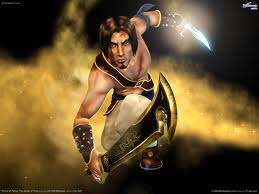119 posts
• Page 2 of 5 • 1, 2, 3, 4, 5
If Mass Effect can do it, why not Skyrim?
-

Lily - Posts: 3357
- Joined: Mon Aug 28, 2006 10:32 am
-

Alina loves Alexandra - Posts: 3456
- Joined: Mon Jan 01, 2007 7:55 pm
Neither the technology nor the gaming mechanics are anywhere CLOSE to making a game like Skyrim fully integrated with kinect. Almost all the motion-control games currently out there are gaming mechanics built around 3 to 6 basic movements. IE. "Lets build a game based on two leg movements and a head movement and call it SOCCER".
Don't get me wrong, I could play Boxing on kinect 8 hours straight, but none of it is advanced enough to implement into Skyrim yet. At least not in a way that wouldn't put kinect users at an abysmal disadvantage compared to mouse+keyboarders.
Don't get me wrong, I could play Boxing on kinect 8 hours straight, but none of it is advanced enough to implement into Skyrim yet. At least not in a way that wouldn't put kinect users at an abysmal disadvantage compared to mouse+keyboarders.
That's because no developers are taking any risks with Kinect's potential, instead being content to port over Wii Sports in HD, and the issue of the Kinect being too much for its console. The 360 should have been replaced over two years ago. It just doesn't have the processor power, memory, or storage capability (5.6 GB max for any game) to handle Kinect's potential.
-

Tyrone Haywood - Posts: 3472
- Joined: Sun Apr 29, 2007 7:10 am
That's because no developers are taking any risks with Kinect's potential, instead being content to port over Wii Sports in HD, and the issue of the Kinect being too much for its console. The 360 should have been replaced over two years ago. It just doesn't have the processor power, memory, or storage capability (5.6 GB max for any game) to handle Kinect's potential.
"What should have been" only underscores my point. There simply isn't enough capability to make Skyrim a motion controlled game.
-

chirsty aggas - Posts: 3396
- Joined: Wed Oct 04, 2006 9:23 am
Kinect in ME3 is still just a rumour though, and even if it wasn't they have already confirmed that Skyrim will not support kinect. Motion control is a silly gimmick, and one that will hopefully die out sooner rather than later.
There is a small subset of games that it works great with (Wii Sports bowling & golf are great
And that's the Wii - the stupid "wave your arms at the camera like an idiot" Kinect thing and Sony's Wii/Move knockoff.... meh.
(As an additional aside - I just don't see any company making radically different control schemes for the different versions of a game.... like Kinect controls for X360, Move controls for PS3, and sorry-no-motion controls for the PC. It's not a good way to program a game.)
-

Richard - Posts: 3371
- Joined: Sat Oct 13, 2007 2:50 pm
Motion controls are overrated and they can't beat what regular controllers can do. If you want to exercise then jog or some other sporting type event, if you want to exercise your mind then play a video game.
-

Carys - Posts: 3369
- Joined: Wed Aug 23, 2006 11:15 pm
To me, Kinect is just a cash-wagon that Microsoft decided to jump on because everyone else was doing it, I don't think it belongs in this sort of game.
Do you own one?
-

bonita mathews - Posts: 3405
- Joined: Sun Aug 06, 2006 5:04 am
The only motion control games out there that are fun are games designed SPECIFICALLY for motion control. I don't know of a single game that tacked motion control on as an after-thought, and if they exist they clearly weren't successful.
The games I've found most compelling on kinect are extremely simple, one dimensional games. Boxing. Soccer. Games where you have 3 - 6 basic movements that make up the whole game. Now consider all the things they'd have to account for in Skyrim:
- Drive character customization interface
- Browse dialog options
- Open inventory, map, skill & perk menus
- Open and interact with the journal
- Use the quick action menu
- Walk, turn, strafe, and head turn (simultaneously)
- Use a weapon and or magic in each hand
- Place and pick up item in world
- Use item transfer interface
I'd say kinect integration would be a TERRIBLE, nearly criminal waste of resources at this point.
The games I've found most compelling on kinect are extremely simple, one dimensional games. Boxing. Soccer. Games where you have 3 - 6 basic movements that make up the whole game. Now consider all the things they'd have to account for in Skyrim:
- Drive character customization interface
- Browse dialog options
- Open inventory, map, skill & perk menus
- Open and interact with the journal
- Use the quick action menu
- Walk, turn, strafe, and head turn (simultaneously)
- Use a weapon and or magic in each hand
- Place and pick up item in world
- Use item transfer interface
I'd say kinect integration would be a TERRIBLE, nearly criminal waste of resources at this point.
They wouldn't *have* to do any of that. They could simply add in some controls that otherwise wouldn't have been there and people w/o kinect could ignore.
-

Josee Leach - Posts: 3371
- Joined: Tue Dec 26, 2006 10:50 pm
Motion controls are overrated and they can't beat what regular controllers can do. If you want to exercise then jog or some other sporting type event, if you want to exercise your mind then play a video game.
I think you guys are missing the point... it wouldn't replace the controller or require the user to even have Kinect. It would optionally supplement the standard experience. Didn't you guys ever play the old Rainbow Six games with voice control. You could command your team with your voice or with some clumsy 3 button press menu via the controller. It still worked in the old fashioned way but the voice stuff made it easier and cooler to control your team. You cuold point at a door and say "Breach and Clear" and your team would do it. A similar could exist here... an optional supplement or alternative control for some items where it makes sense... not complete integration or controller replacement.
-

Jennie Skeletons - Posts: 3452
- Joined: Wed Jun 21, 2006 8:21 am
did anyone else hate that fact that last years E3 showed kinect for most of the show. that was so annoying what a wast of an E3 event. so putting kinect to skyrim is a big no for me.
-

Dorian Cozens - Posts: 3398
- Joined: Sat May 26, 2007 9:47 am
"What should have been" only underscores my point. There simply isn't enough capability to make Skyrim a motion controlled game.
Motion controls are overrated and they can't beat what regular controllers can do. If you want to exercise then jog or some other sporting type event, if you want to exercise your mind then play a video game.
Actually, motion control can exceed Dual-Shock controler performance. A controller has four almost mutually exclusive buttons (Nobody likes pushing A&B at the same time) that are keyed to binary input (Is it pressed or not? Technically, they have anolog input, but actually implementing pressure-sensitive reactions to the buttons is a bad idea), two pairs of mutually exclusive of shift keys (R1&L1, which have room for anologue input, and R2&L2, which don't), eight very fiddly binary-input buttons (The D-pad), and two anologue motion sticks that are each mutually exclusive with one of the keypads.
A keyboard has ~19 binary input buttons readily available (1-5, \=\QTVZ), + 3 "Alternate function" buttons (2 of which are dangerously close to a button that wants nothing better to do than to screw you over at the worst possible time. What moron installed the "System Key" into keyboards in the first place? There's a reason Alt-F4 and Ctrl-Alt-Delete almost impossible to hit by accident), an anologue pointer, a scroller, and 3-5 left-hand buttons (Unless you use a Razer mouse which have up to... 18?), and enough buttons to do anythign you might want to at any given time, but are inconveniently distant to do everything you want to.
Both controllers and keyboards have rigid input setups, with each keystroke being unique. As well, they both have to follow tradition: WASD to move on keyboard, Left Stick to move, Right stick for camera on Controller, etc.
Motion capture, though, depending on the sensitivity, can accept unlimited input (Tracking anything from virtual keystrokes in the fingers, to unique, wacky gestures, to tracking the very motion of your eyes), and can be tailored to fit the software, instead of having to force a control scheme onto a setup that may or may not work with what you want to do. It's also fully compatible with traditional control schemes. And then, some even has voice-recognition on top of video and tactile input.
Comparing Motion control's potential for input to the Dual-Shock controller is like comparing the Dual-Shock controller with a one-button Atari joystick. And, it's as potentially as intuitive to use as mind bullets.
And it's not about exercize/being active either. It's about directly interfacing with the game, instead of staring at a menu asking "Which key's the "Any" key?"
-

StunnaLiike FiiFii - Posts: 3373
- Joined: Tue Oct 31, 2006 2:30 am
Kinect is stupid.
Quit supporting it. If you want to jump around, go outside.
Quit supporting it. If you want to jump around, go outside.
-

Adam Baumgartner - Posts: 3344
- Joined: Wed May 30, 2007 12:12 pm
Do you own one?
Isn't that a trick question?
If he says no, then you sandbag him about how he shouldn't judge things before trying it.
If he says yes, then you can twist his arm about being another victim of a corporate scam.
Just face facts, Kinect options in a complex game just svcks. I don't think that Killzone 3's gun controller hooked many people. If you want to make simple games that focus around it, then Kinect works, but on a game that most likely works for kids. If you put it in a game like Skyrim, it will be poorly implemented and be a confusing mess. Face it, you can't have a game with a deep interface like Skyrim or even Mass Effect with Kinect as a viable option.
-

Sandeep Khatkar - Posts: 3364
- Joined: Wed Jul 18, 2007 11:02 am
Why? Because Howard realizes the little he could add using things like the Kinect would be gimmicky at best. It's better to wait and let the technology evolve.
Basically Bethesda's being smart, for once.
Personally, [censored] that. Any and all extra resources needs to be used on writers.
Basically Bethesda's being smart, for once.
Personally, [censored] that. Any and all extra resources needs to be used on writers.
-

hannaH - Posts: 3513
- Joined: Tue Aug 15, 2006 4:50 am
Kinnect uses the xbox processor for some of the work. Which is why most games havent added kinnect after the fact. They are ALREADY using the 360 resources and dont have any runtime left for the kinnect to be able to function.
I would rather a game like Skyrim or Battlefield 3 use the resources of the xbox for graphics, sound & gameplay. Not some silly peripheral, that you are using to jump on a bandwagon after the bandwagon has used most of its momentum and has started to fall apart. lol
I would rather a game like Skyrim or Battlefield 3 use the resources of the xbox for graphics, sound & gameplay. Not some silly peripheral, that you are using to jump on a bandwagon after the bandwagon has used most of its momentum and has started to fall apart. lol
-

Chavala - Posts: 3355
- Joined: Sun Jun 25, 2006 5:28 am
Kinnect uses the xbox processor for some of the work. Which is why most games havent added kinnect after the fact. They are ALREADY using the 360 resources and dont have any runtime left for the kinnect to be able to function.
I would rather a game like Skyrim or Battlefield 3 use the resources of the xbox for graphics, sound & gameplay. Not some silly peripheral, that you are using to jump on a bandwagon after the bandwagon has used most of its momentum and has started to fall apart. lol
I would rather a game like Skyrim or Battlefield 3 use the resources of the xbox for graphics, sound & gameplay. Not some silly peripheral, that you are using to jump on a bandwagon after the bandwagon has used most of its momentum and has started to fall apart. lol
Again, refer to my post at the end of the previous page.
-

Emily abigail Villarreal - Posts: 3433
- Joined: Mon Aug 27, 2007 9:38 am
Kinnect uses the xbox processor for some of the work. Which is why most games havent added kinnect after the fact. They are ALREADY using the 360 resources and dont have any runtime left for the kinnect to be able to function.
I would rather a game like Skyrim or Battlefield 3 use the resources of the xbox for graphics, sound & gameplay. Not some silly peripheral, that you are using to jump on a bandwagon after the bandwagon has used most of its momentum and has started to fall apart. lol
I would rather a game like Skyrim or Battlefield 3 use the resources of the xbox for graphics, sound & gameplay. Not some silly peripheral, that you are using to jump on a bandwagon after the bandwagon has used most of its momentum and has started to fall apart. lol
I didn't know this, and it's another reason to hate the Kinect.
-

Monika Fiolek - Posts: 3472
- Joined: Tue Jun 20, 2006 6:57 pm
http://www.joystiq.com/2011/06/02/rumor-mass-effect-3-getting-better-with-kinect/
I still think Skyrim could benefit from optional Kinect Support for spell casting, voice integration, etc. Looks like ME is doing it...
I still think Skyrim could benefit from optional Kinect Support for spell casting, voice integration, etc. Looks like ME is doing it...
And according to Todd Howard, Skyrim won't be doing it.
-

Dewayne Quattlebaum - Posts: 3529
- Joined: Thu Aug 30, 2007 12:29 pm
I think you guys are missing the point... it wouldn't replace the controller or require the user to even have Kinect. It would optionally supplement the standard experience. Didn't you guys ever play the old Rainbow Six games with voice control. You could command your team with your voice or with some clumsy 3 button press menu via the controller. It still worked in the old fashioned way but the voice stuff made it easier and cooler to control your team. You cuold point at a door and say "Breach and Clear" and your team would do it. A similar could exist here... an optional supplement or alternative control for some items where it makes sense... not complete integration or controller replacement.
You know I remember playing Tom Clancy's Endwar, which utilized a voice command system designed by Magpul Industries. I told Werewolf (a normal fire team) to take site Bravo. I dropped a WMD on site Foxtrot. I'll stick with the "clumsy" 3 button press combo.
-

Krystina Proietti - Posts: 3388
- Joined: Sat Dec 23, 2006 9:02 pm
Again, refer to my post at the end of the previous page.
Im sorry, had we had this conversation before? It seems you agree with me....
-

Eileen Collinson - Posts: 3208
- Joined: Thu Dec 28, 2006 2:42 am
Do you own one?
No, I refuse to pay £80 for an underdeveloped device that lets me play games by swinging my arms around like I've just had a stroke. My friend was stupid enough to buy one however and I gave it a go, needless to say, I was not impressed.
-

Hot - Posts: 3433
- Joined: Sat Dec 01, 2007 6:22 pm
If it is true, that Mass Effect is supporting kinect then it's clearly just a money grab. Those few people with a kinect will be looking for a kinect game and see that manly men hetrosixual shooter is now on kinect and go ahead and buy it. Not my probelm but it's just what I'm seeing.
-

Nany Smith - Posts: 3419
- Joined: Sat Mar 17, 2007 5:36 pm
I hate Kinect and all motion control.. I'll be so disappointed in Bethesda if they choose to waste their time with that stuff.. :brokencomputer: :brokencomputer: :brokencomputer:
-

Brandon Wilson - Posts: 3487
- Joined: Sat Oct 13, 2007 1:31 am
119 posts
• Page 2 of 5 • 1, 2, 3, 4, 5
